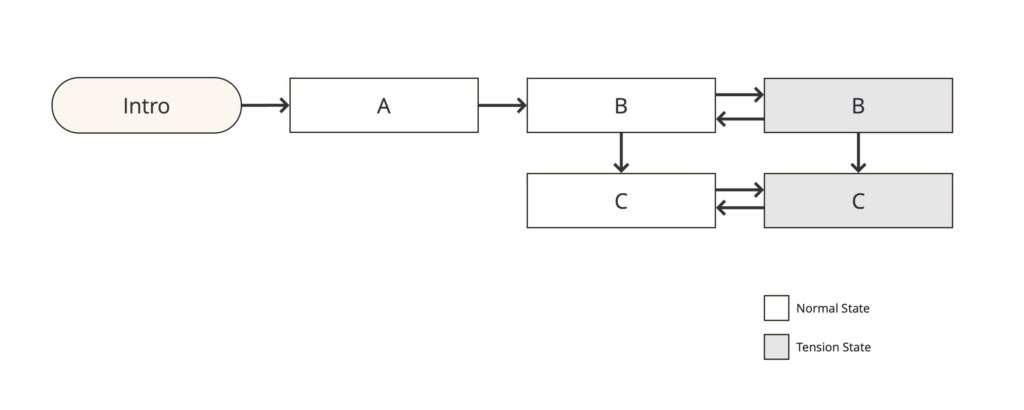Creating an adaptive music system for the video game
prototype Henry (2022)
This thesis by Lucien Montandon focuses on creating an adaptive music system for an
indie video game prototype called Henry. The game is a single-player narrative adventure
with platforming elements, where players take on the role of Henry, a character who can
possess and control various everyday objects around him. Through these interactions,
players explore different phases of Henry’s life, solving puzzles and progressing through the
story.
The main goal of Montandon’s thesis is to enhance the gameplay experience by designing
a music system that dynamically adjusts to the player’s actions and the game’s changing
environments. Montandon explores various types of adaptive audio, including interactive,
generative, and procedural audio, and integrates these into the game through a layered
music system. The adaptive music system responds to different in-game events: it can
intensify during action sequences or create specific atmospheres in different rooms.
By utilising software such as FMOD and Unity, the thesis dives into the technical side of
implementing this adaptive audio. Montandon also distinguishes between different music
integration techniques, like vertical layering (where different musical elements fade in and
out) and horizontal sequencing (where the music shifts entirely between themes or styles).
Each of these approaches is tested to assess how they contribute to gameplay and
whether they can scale for future levels in the game.
Level of Design/Creativity
The work demonstrates a sophisticated level of design, especially in its conceptual
approach to creating an adaptive music system for gaming. The author shows a deep
understanding of complex audio systems, notably adaptive, generative, and procedural
audio, as well as vertical and horizontal layering techniques. His creative approach in
designing different systems reflects advanced sound design tailored to gaming
experiences.
Degree of Innovation
This thesis presents a notable innovation by combining adaptive and generative techniques
tailored for a game prototype. By developing unique audio solutions for gameplay that
include real-time interactions, layered compositions, and customisable responses to player
actions, the work stands out as an original and valuable contribution to game audio.
Independence
The author demonstrates a strong level of self-sufficiency, not only in theoretical research
but also in practical application and testing. This is evident from the structured approach to
testing the systems with gameplay videos before in-game implementation and developing
solutions tailored to the game „Henry.“
Structure and Organization
The structure is well-organised, guiding the reader through the theoretical foundations, the
technical aspects of the adaptive music systems, and the application within the gameplay.
Each section logically builds on the previous one, allowing even readers with less technical
knowledge to follow. However, there is a high level of technical detail that might benefit
from simplification or additional visuals for clarity.
Communication Level
The communication style is clear and informative. Complex audio terminologies are defined
well, making the work accessible.
Scope of Work
The work is comprehensive, covering various music systems, their individual functionalities,
and the impact on gameplay. The depth of detail regarding adaptive audio and the technical
aspects of integrating FMOD and Unity shows that the thesis is extensive and tackles both
conceptual and practical elements.
Spelling and Accuracy
There seem to be a few inaccuracies in terms of spelling. Regarding technical terminology
there is a detailed approach to defining terms maintaining clarity and precision.
Literature Use
The author uses relevant and recent literature, and sources are cited effectively. The use of
industry references, such as the examples from specific games and audio systems,
enhances credibility and demonstrates a strong understanding of the current game audio
scene.


